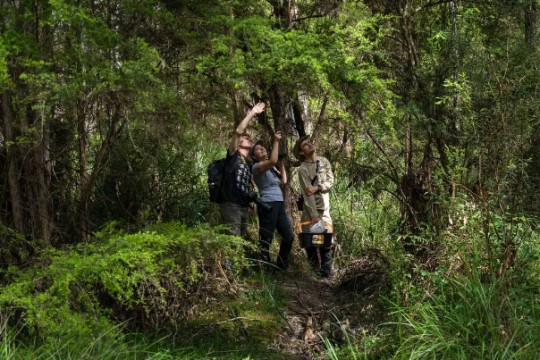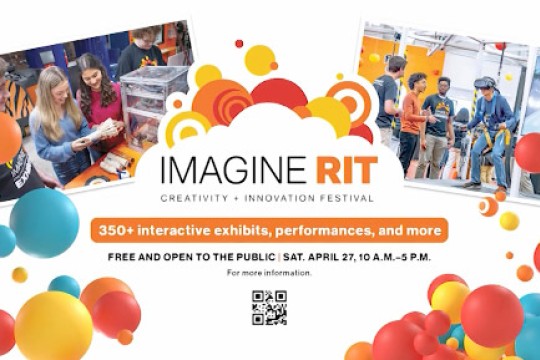RIT Professor Seth Hubbard receives DOE grant to develop low-cost, high-efficiency solar cells
Research focuses on making the substrates that solar cells are grown on reusable
Gabrielle Plucknette-DeVito
Professor Seth Hubbard, right, received nearly $400,000 from the DOE to explore ways to dramatically reduce the cost of the most expensive solar cells by using a process called spalling to make the substrates solar cells are grown on reusable
A Rochester Institute of Technology professor received a grant from the Department of Energy to research ways to develop low-cost, high-efficiency solar cells. Professor Seth Hubbard received nearly $400,000 from the DOE to attempt to dramatically reduce the cost of high-efficiency solar cells by using a process called spalling to make the substrates solar cells are grown on reusable.
“One of the issues with solar cells is you can make them cheaply but they’re not as efficient and thus they don’t produce as much power. Or you can spend more money to create solar cells that are more efficient,” said Hubbard. “The most efficient type of solar cells, and unfortunately the most expensive, are used in space for satellites because the cost is less important in that environment. In this project, we’d like to bring these cells down to earth at a reasonable cost.”
Hubbard is an expert in designing, growing, and fabricating solar cells and said that if the cost of these highly efficient solar cells can be reduced enough, they could be used to help devices ranging from smartphones to drones to cars. Hubbard is a faculty member in the School of Physics and Astronomy, director of the NanoPower Research Laboratories, and a member of the Future Photon Initiative.
Over the next three years, he will partner with Arizona State University, the National Renewable Energy Laboratory and a company called Crystal Sonic to conduct the research. The funding RIT received will help support an RIT research scientist as well as students from RIT’s master’s in physics and Ph.D. in microsystems engineering programs to work on the project. Hubbard said he hopes to bring in undergraduate students to help with the research starting next summer as well. The work is expected to be completed in 2023.















